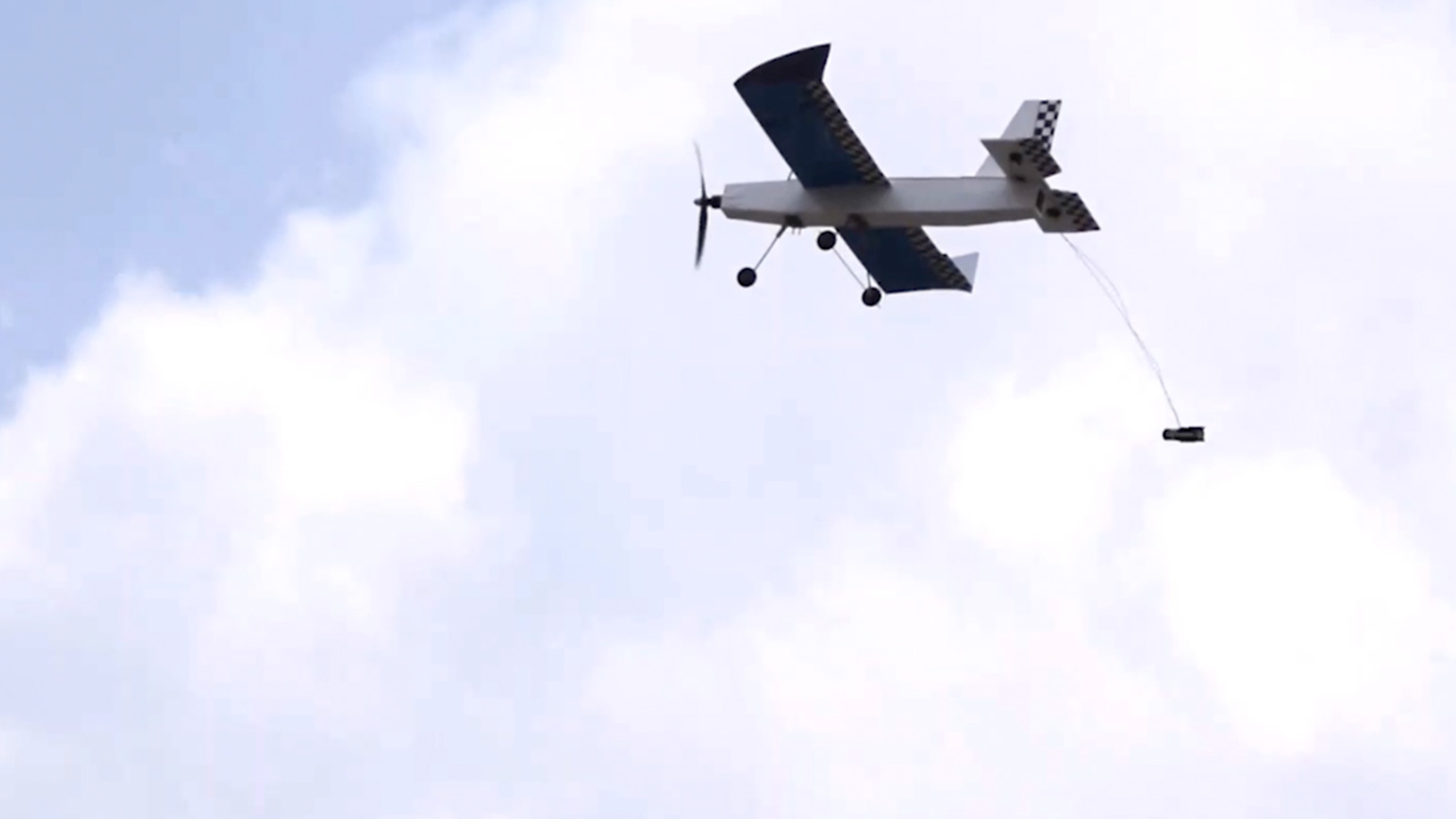Stay Up to Date
Submit your email address to receive the latest industry and Aerospace America news.
After virtual event, plans call for resuming in-person flyoffs in 2022
Team Arcis from Dayananda Sagar College of Engineering squeaked out a win over the University of Central Florida and 66 other collegiate teams to earn the top prize in AIAA’s annual Design Build Fly competition, the institute announced today.
An initial tally of the scores showed a tie between Team Acris and UCF, but judges recalculated the scores to more decimal points, and Team Arcis was “clearly” the winner, said contest director Russ Althof during today’s Zoom awards presentation.
“I can’t say enough about the first and second place winners,” said Althof, a chief engineer at Raytheon Missiles and Defense. “We’ve never had anything like that.”
It was a unique ending to the most unusual competition in the history of DBF. Covid restrictions, which vary widely in the 10 countries from which the competitors came, prompted a modified virtual format for the 2021 competition. In normal times, the event would have spanned four days at Tucson International Modelplex Park Association Airfield in Arizona, located near the offices of sponsor Raytheon Missiles and Defense. Instead, each team submitted a design report and video of its aircraft in flight.
The team’s winning video showed their aircraft, called Primis 2, undertaking the DBF challenges while a team member explained the calculations performed and materials chosen for Primis 2. In one portion of the video, the 8.3 kilogram, remotely piloted aircraft towed a small, finned cylinder on a tether to simulate towing a sensor such as a camera. It then wound up the tether and pulled the sensor back inside the aircraft.
The rules called for each team’s video to show the takeoff, landing and sensor deployment, but production quality of the videos was not part of the scoring criteria, said the U.S. Naval Research Lab’s Chris Bovais, the competition’s flight line director. That approach preserved the “learning experience” of students building their aircraft while accounting for the fact that teams did not all have access to the same resources for filming and editing the flight videos, he said.
Covid restrictions created obstacles for the competitors. The team at the University of Glasgow in Scotland was unable to begin building and assembling their aircraft until April because of a mandatory lockdown of university facilities. With the submission deadline looming, the team members agreed to build the plane in the studio apartment of Shreyas Raje, a third-year student and veteran member of the team.
But the tight confines posed a difficult question: How to build the wings? “Carbon fiber work, that’s completely out of the picture,” Raje said.
So they improvised by removing the wings from the plane they had built for the 2020 DBF fly off before it was cancelled due to the pandemic in favor of an award based solely on the best report. They attached them to the new fuselage via zip ties.
Though pleased with their aircraft, Raje said “it is unfortunate” that the logistical challenges meant that not everyone flew at the same location in similar conditions, and therefore it was not, in his view, “ a pure engineering challenge.”
Ken Visser has another perspective. The aerospace engineering professor, who has been the faculty adviser for the DBF team at Clarkson University in New York for about 20 years, said the covid restrictions mirrored those that aerospace companies and professionals have worked around over the past year.
“You cannot teach that, you have to go through that,” he said, and that “builds your confidence and they [the students] realize, ‘I can actually do this. I can solve a problem that has an infinite number of answers.’”
Still, organizers and students are awaiting the 2022 competition, which if all goes as planned, will be in person at the Cessna East Field in Wichita, Kansas, located near the offices of sponsor Textron Aviation.
“Nothing beats that excitement in the air that you have when you see real aircraft,” Visser said. “For them to see all these different configurations and different decisions made in the design space, that is invaluable. That’s what makes it more than just another assignment.”
And the winners are …
First place: Dayananda Sagar College of Engineering in India — $3,000
Second place: University of Central Florida — $2,000
Third place: Embry-Riddle Aeronautical University, Daytona Beach — $1,000
Best design report: University of Michigan, Ann Arbor — $100
About cat hofacker
Cat helps guide our coverage and keeps production of the print magazine on schedule. She became associate editor in 2021 after two years as our staff reporter. Cat joined us in 2019 after covering the 2018 congressional midterm elections as an intern for USA Today.
Related Posts
Stay Up to Date
Submit your email address to receive the latest industry and Aerospace America news.




